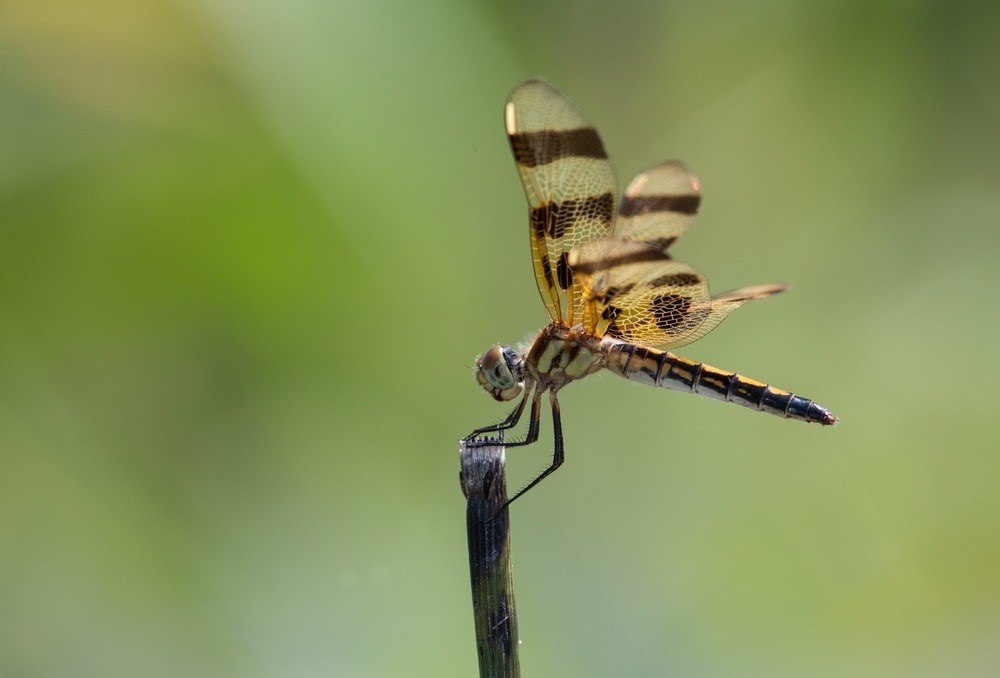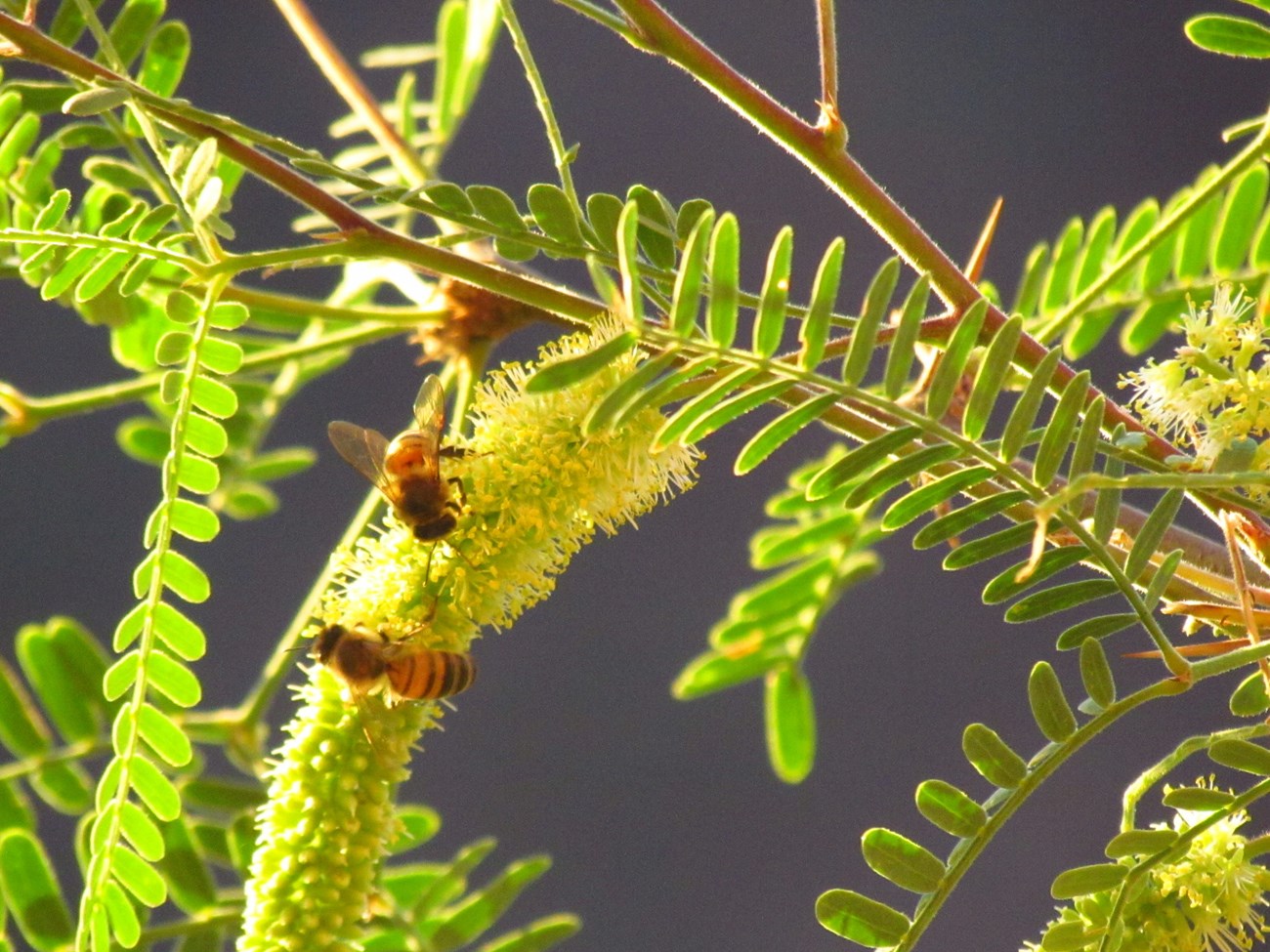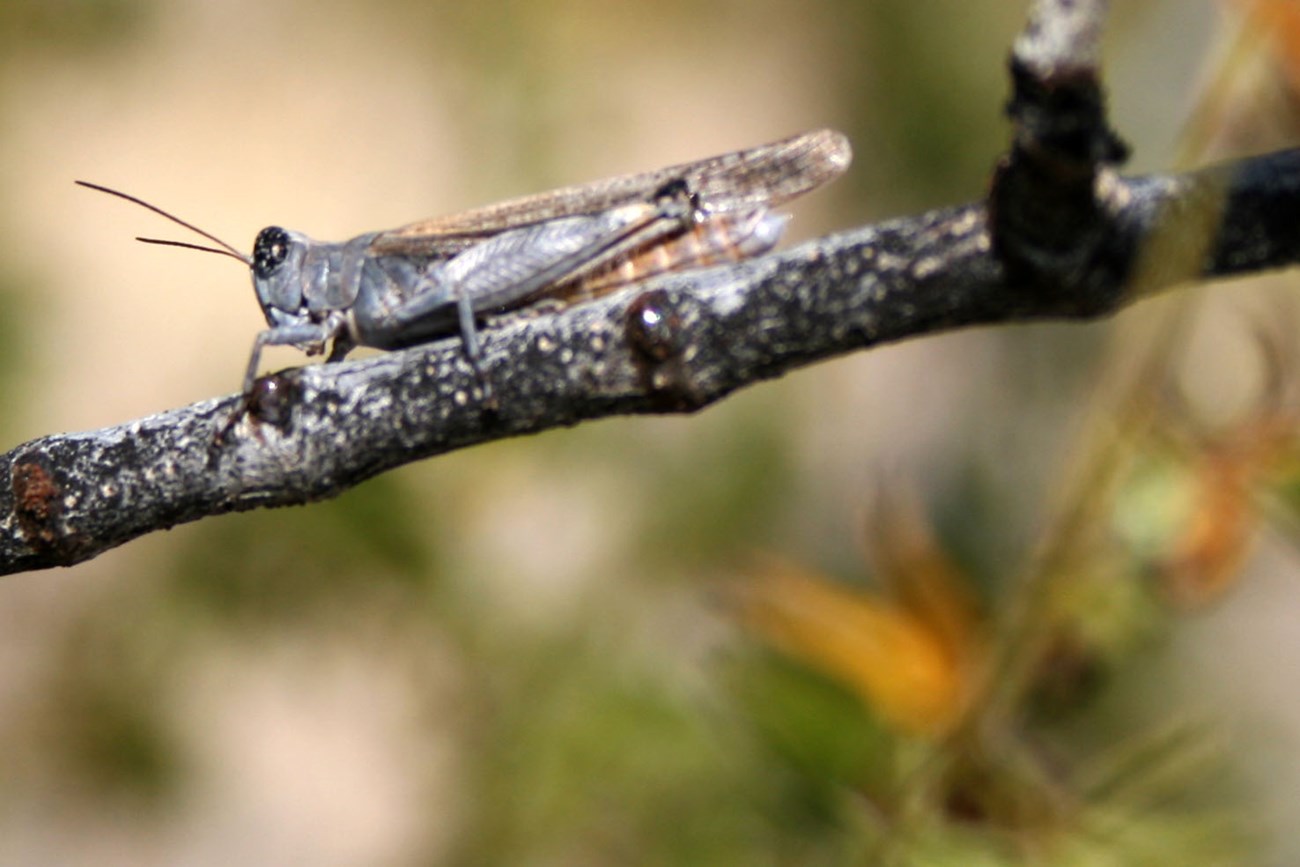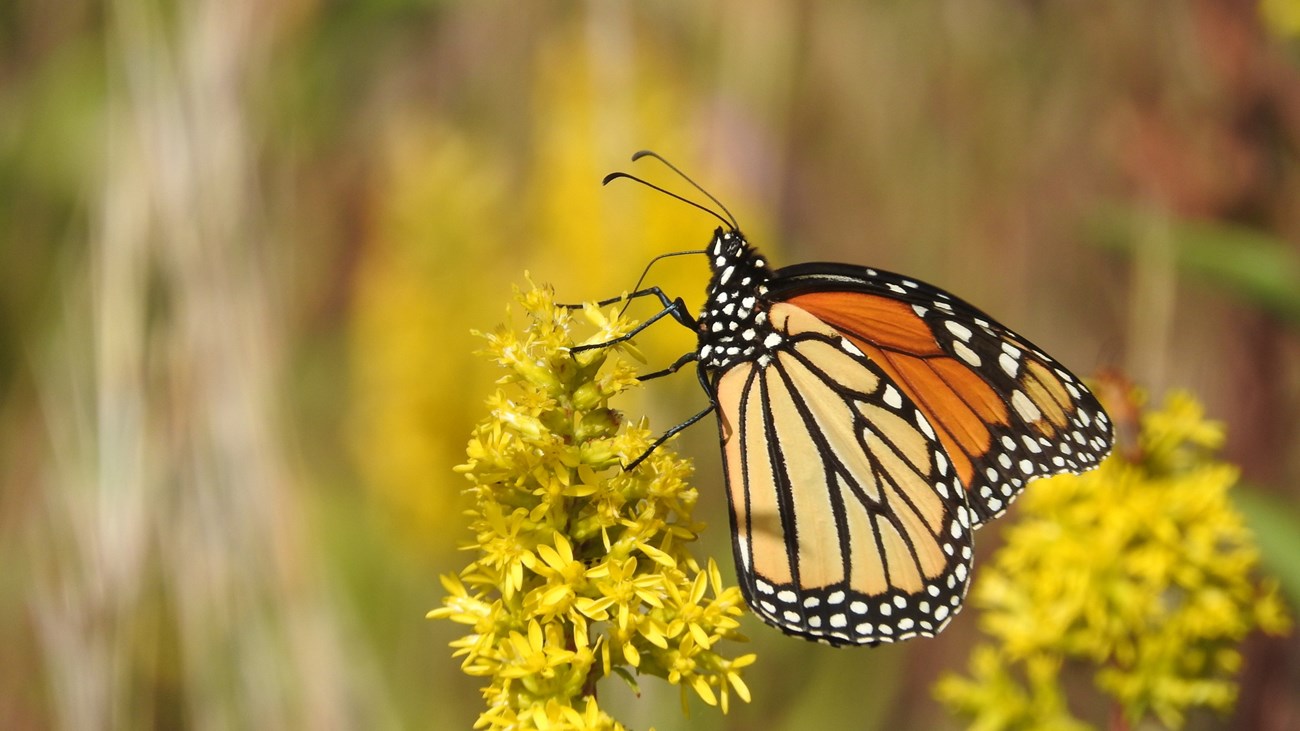Last updated: April 24, 2019
Article
You’re Bugging Me!

Mississippi National River and Recreation Area
NPS Photo
The wild world of insects
Bugs are the most diverse group of wildlife on the planet. There’s more than 900,000 different species! They’re also some of the greatest ecosystem builders in our national parks, and they often work behind-the-scenes. This spring, we invite you to take a closer look at the wild world of insects and all the cool stuff they do!
What makes a bug an insect?
All insects have three-part bodies, some have wings, and they have three pairs of legs. Their bodies are split into the head, then the thorax, then the abdomen. All three pairs of legs are attached to their thorax. However, there’s a lot more to these creepy crawlies than that.
Insects do a lot of different jobs in our natural areas. More than 75 percent of Earth's flowering plants depend on bees and other pollinators to help them develop healthy offspring. Pollinators are important in wild natural areas, our farming communities, and even urban areas. We can thank them for pollinating tons of different plants that keep our air, economy, and stomachs happy.
Some insects are also key players in the decomposition cycle because they eat plants like trees and fallen leaves. They can help keep ecosystems in balance by doing this, but they can also set off high stress periods when an insect species moves from its home range to a new area. Non-native and invasive species can completely reorganize an ecosystem and provide park staff with a constant challenge to properly manage them. In other cases, insects can be used as a biocontrol against other bugs who are causing problems in an ecosystem.
There’s a bunch of different kinds too...
With hundreds of thousands of species to pick from, we couldn’t possibly talk about every single one. However, these are seven of the most common kinds of insects you’ll see in our national parks and other places. As the weather warms up, see how many you can find.

Tonto National Monument
NPS Photo / C. Sadler
Hymenoptera
These are ants, wasps, and bees. Many of these insects have a clearly defined waist between their thorax and abdomen, and all of them have four visible wings that move in two simultaneous pairs. You might ask, why don’t all ants have wings? Only ants who can reproduce will develop wings, while worker ants remain wingless. There’s a lot of them too, making up as much as a quarter of animal biomass in warm climates!
Diptera
Your common housefly is a great example of Diptera. Notice that they seem to only have one pair of wings. While these insects actually do have a second pair of wings, called halteres (vestigial wings), 0they are so small you might not be able to see them. These special, secondary wings help them tell what direction they’re going and balance! Think about it this way, flies have built-in gyroscopes like the ones in the International Space Station.
Neuroptera
Lacewings are a pretty special kind of insect. If you look very closely at their wings, you can see countless little veins criss-crossing them. Those veins add flexibility to their wings, and that helps Neuroptera to fly forwards, backwards, and side to side. This helps them to be great predators, taking down mosquitoes, gnats, butterflies, and even smaller dragonflies! Even as larvae, dragonflies are apex predators of the bug world.

Saguaro National Park
NPS Photo
Orthoptera
Grasshoppers, crickets, and katydids are all Orthoptera. Think of these insects as the jumping bugs, with thick back legs that help them move from place to place. Did you know that the infamous locust is a type of grasshopper? A single grasshopper can eat half its body weight in plants every day, so when large groups gather and swarm they can devastate crops. No wonder everyone called locusts a plague! Plus, an average grasshopper can jump up to 30 inches. That would mean if you could jump like a grasshopper, you could use one jump to leap over the Indianapolis Colts, the New England Patriots, and land in the end zone at the other end of the football field.
Hemiptera
Hemiptera include what scientists call "true bugs" because of their classic appearance. Hemi- means half, like in Hemisphere. So when looking for true bugs, you have to look at their wings. The front half that’s closer to their head will be opaque, while the back half next to their bottom is clear. Other hemipterans include leafhoppers, aphids, and cicadas. Cicadas live on every continent except Antarctica. However, periodical cicadas who come out every 13 or 17 years can only be found in the continental U.S. east of the Great Plains. That’s because those groups of cicadas have lived in the same places since the last ice age!
Coleoptera
Beetles! Did you know these insects actually have two pairs of wings? The top pair is hardened into a shell that keeps their delicate second pair of wings safe! Many of these bugs live in trees and burrow to make their homes, so they need to be careful with their wings. Lady Beetles, better known as Lady Bugs, are some of the most aggressive hunters in the animal kingdom. Many of them will eat thousands of tree and garden pests during their lifetime.
Lepidoptera
Butterflies and moths are two great examples of Lepidoptera. The powder on butterflies and moths is a combination of pollen and tiny scales that keep them safe from predators like spiders. That’s what lepido- means, scales! Butterflies are really cool, and they can even taste with their feet! However, moths are actually much more common around the world, and they often considered pests because of their tendency to damage fruit and lumber.

Missouri National Recreational River
NPS Photo / Daniel Peterson
Thanks to little helpers!
Whether it’s some ants at your picnic or a fruit fly trapped in your kitchen, insects can often feel like a nuisance. These super diverse and interesting bugs are important to a healthy ecosystem that supports us and other wildlife both large and small. So be sure to thank our creepy crawly friends in the future.
